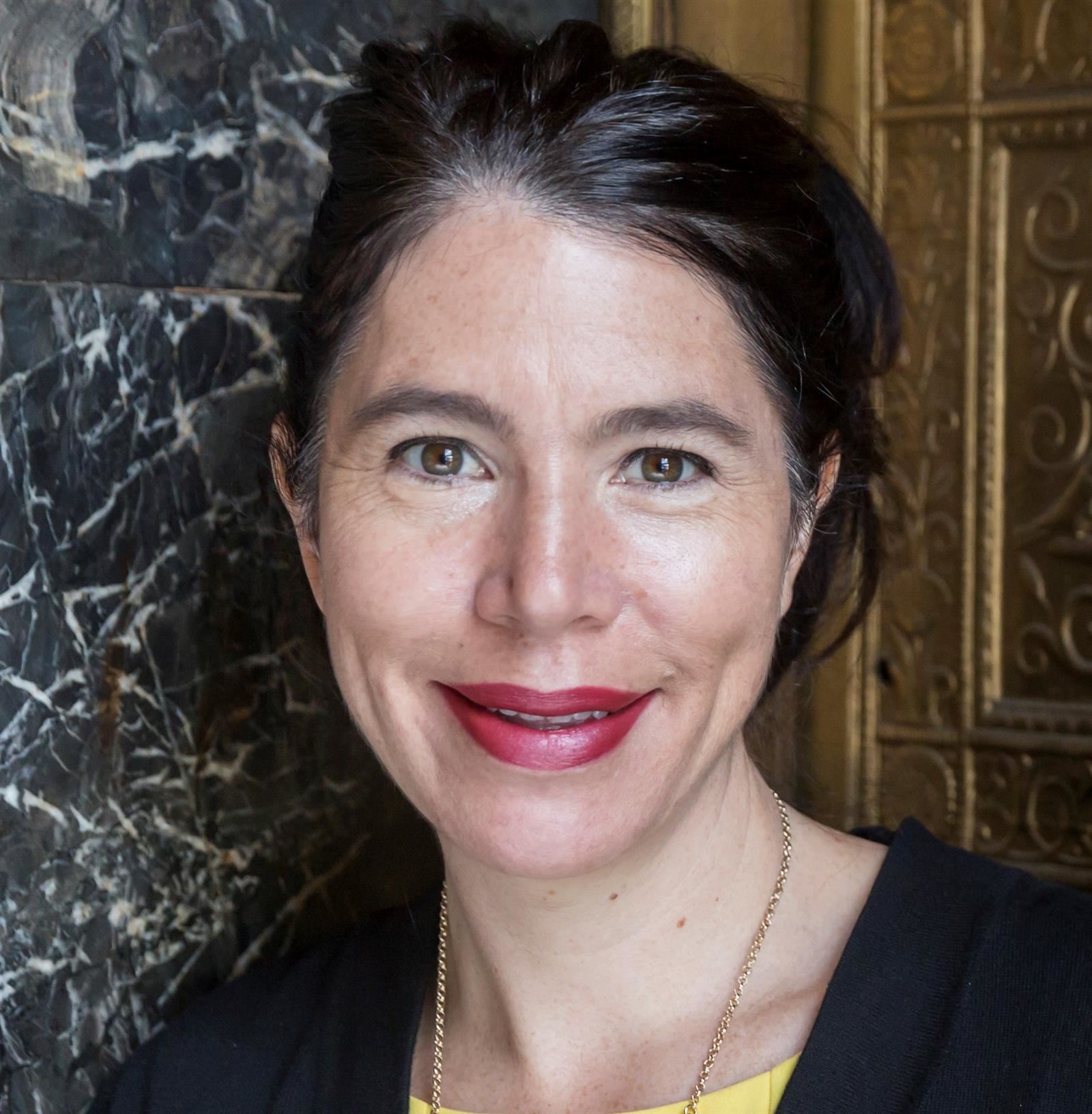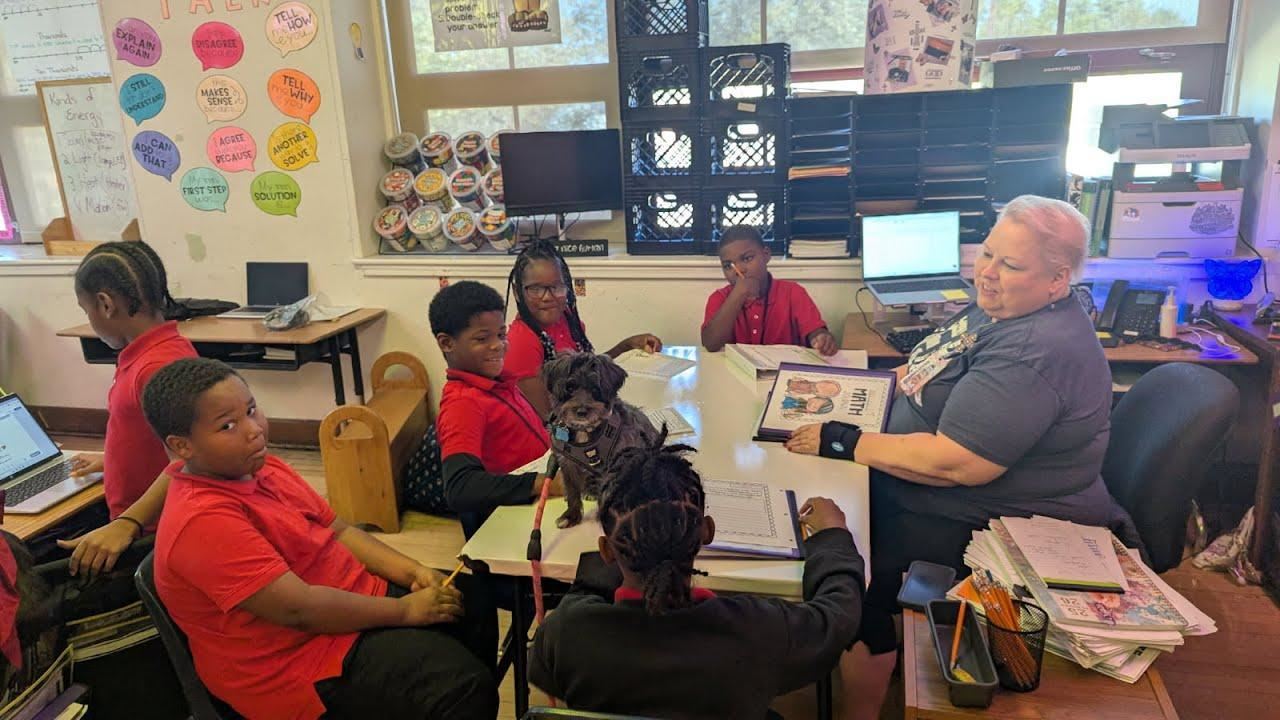- Council of the Great City Schools
- Public Education Matters: Detroit Expands Role of Counselors to Support Student Mental Well-Being
Digital Urban Educator - October 2025
Page Navigation
- Town Hall to Tackle How Urban Schools Can Improve Student Outcomes Amid Challenges
- Who Will be Named the 2025 Urban Educator of the Year?
- Winston-Salem Welcomes New Superintendent; Palm Beach Leader Earns Perfect Evaluation
- Toledo Aims to Transform Education Through New Community-Focused Campus
- Council Releases Reports Highlighting the Value of NAEP and Supporting Newcomer Students
- Public Education Matters: Detroit Expands Role of Counselors to Support Student Mental Well-Being
Public Education Matters: Detroit Expands Role of Counselors to Support Student Mental Well-Being
-
Before the COVID-19 pandemic, Renata Bush's job as a counselor at Detroit’s Davison Elementary mostly entailed programming students' academic schedules and tending to administrative tasks. But as students returned to schools and student mental health needs became more evident, Detroit Public Schools Community District (DPSCD) shifted its counselors' focus to holistic student support and backed up that shift with pandemic emergency funds.
“The needs have greatly increased,” Bush said. “Now we have to truly service the whole child. That allows me to enlarge my reach with students and make a greater connection. Children want to feel connected…and valued.”
It’s a move that is paying off for the district’s middle and high school students.
According to the University of Michigan's Youth Policy Lab, fewer eighth- to 12th-grade Detroit students reported depression and anxiety symptoms in 2023, below pre-pandemic levels and the national average. The most marked improvements were among Asian and Black students.
District officials attribute that good news to the student mental well-being support infrastructure it has built since 2020, including a universal wellness screener, more school counselors, and tiered social and emotional support interventions.
National student mental health crisis
Mental health challenges among the nation’s adolescents have worsened over the past decade, and the COVID-19 pandemic intensified anxiety and depression for many young people.
“There was so much going on with isolation, so much more conversation around mental health and anxiety and depression,” said Alycia Meriweather, the district’s deputy superintendent of external partnerships & innovation.

The Detroit school system, in collaboration with the University of Michigan, surveyed students in 2019 because of growing concerns about student mental well-being. Results showed more than half of student respondents in the district had experienced symptoms of anxiety or depression, and an alarming 23 percent had seriously considered attempting suicide within the past year.
“The district saw it as important to find out…what is actually going on” with student well-being,” Meriweather said. The results of the 2019 survey “helped us think more deeply about what else could be done [to support student mental health] in a more comprehensive way.”
From there, the district worked with the university to develop a universal wellness screener that it now administers annually to students in grades 3 to 12 to gather baseline data on how students are faring socially and emotionally — even when a student’s external behavior doesn’t indicate internal struggles.
“You can see a young person is having issues by their behavior, but other kids are actually not exhibiting anything externally,” Meriweather said. “But when they answer the [questions on the] screener, it becomes clear there’s a problem.”
A universal dashboard also tells school leaders what percentage of students have completed the wellness screener so they can follow up with those who have not.
The school’s behavioral health team then uses wellness screener reports to intentionally and holistically address students’ social and emotional needs. Interventions take place through schoolwide lessons and routines, small-group and individual counseling or both, depending on a students’ specific needs.
Expanding the counselor’s role
Once a school has its wellness screener data for the year, behavioral health team members can assign students to tiered intervention services, starting with a whole-school plan that reaches every student. Counselors lead students in mindfulness and calming techniques, facilitate “table talks” with students to address observed grade-level behavioral needs, and model positive behavior strategies, such as how to use kind words and phrases when working as a team.

“We give that added mental health support to every single student,” Bush said. “We talk about strategies to help the children to deal with situations that may arise, like personal space. How do you deal with someone’s comments or perceptions of you?”
Additional schoolwide support Bush and her team provide daily to all students is part of the Calm Classroom approach. Counselors play soft music or sounds that are piped into classrooms over the school’s speaker system to help regulate students after high-energy times such as lunch and recess. Teachers might continue playing the soft sounds throughout instructional time to help students focus on academic work.
These simple techniques have “majorly decreased” student fights and verbal altercations during lunch and recess by 80 percent, Bush said.
When wellness screener reports identify students who need more intensive, personal support, counselors like Bush and contract master’s-degree-level mental health counselors (who DPSCD originally paid for using federal pandemic emergency funds) are available for weekly one-on-one counseling sessions. School-based counselors also create small-group interventions for students who might benefit from group therapy.
“Sometimes children feel like they’re the only one that’s dealing with something, and it's important for them to see that ‘I’m not in this thing alone,” Bush said.
Making sure students don’t slip through the cracks
Detroit officials have created systems to ensure all of its 53,000 students get appropriate mental health support.
Each school now has a culture and climate leadership team. The team consists of the school’s attendance agent, counselor, nurse, social worker, contract behavioral health vendor, and sometimes even the school security guard, who come together to confidentially “triangulate” around individual students to examine patterns of behavior and ensure they are receiving formal support.
“You know, ‘This kid has been in three fights this week. Their attendance is also challenging. Counselor, have we done the screener with this kid?’” Meriweather explained.
DPSCD also built a confidential, two-way communication system with the local children’s hospital to provide mental health background information on students who are hospitalized for mental health crises. When a school refers a student for hospitalization, the communication system also informs the school whether the student’s caregiver followed through.
“Because when you release the child to the parent…you don’t know if they took them [to the hospital],” Meriweather said. “Now there’s this closed loop. They can’t give all the private details, but at least there’s confirmation the child did come” or not.
Bush added that “old-school” interpersonal communication helps ensure students don’t fall through “that crack.”
“It has to be a collaboration and constant communication,” she said.
Without federal funding, more students would struggle
In-school student mental health support systems like Detroit’s expand access for families, Bush said.
“Some families do not have the means, some are homeless, some do not have the insurance to get support out of the school,” she said.
Without in-school support, she added, “we would have more behavioral issues. It’s much easier [for teachers] to teach, it’s much easier for the [students] when they feel heard and can come and express the things that are bringing so much pain and trauma.”
Meriweather said without federal funding and Medicaid, the district would be able to maintain the wellness screener, but not much more.
The ratio of students to counselors and social workers would increase, making it harder to meet all students’ needs.
“Giving [students] what they need would be drastically impacted,” she said.
The expanded capacity from contract behavioral health counselors, who have billed Medicaid since the end of pandemic emergency funds, would also be threatened because of proposed Medicaid cuts.
“If that stops, they cannot provide those services for free,” Meriweather said. “I don’t see a path forward.”
Media Contact:
Contact Name
Contact@email.com
(000) 000-0000
Contact Name
Contact@email.com
(000) 000-0000
Contact Name
Contact@email.com
(000) 000-0000
Media Contact:
Contact Name
Contact@email.com
(000) 000-0000
Contact Name
Contact@email.com
(000) 000-0000
Contact Name
Contact@email.com
(000) 000-0000


